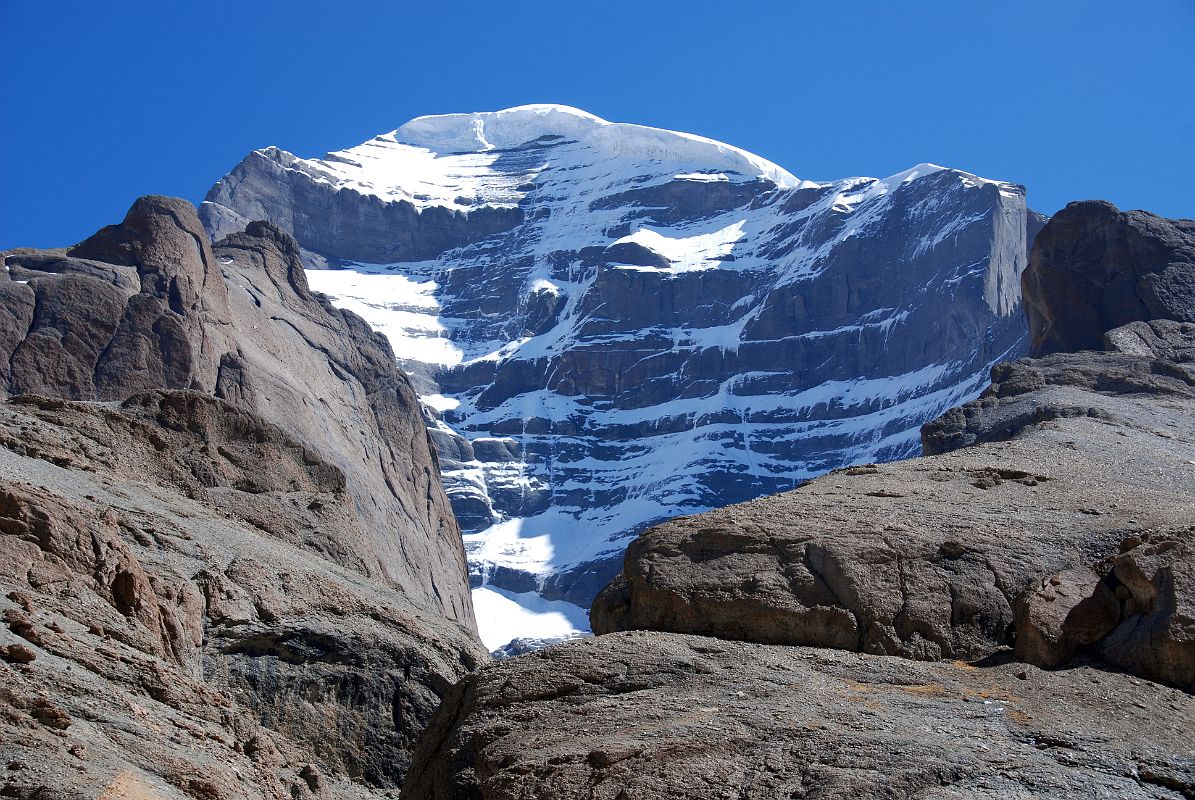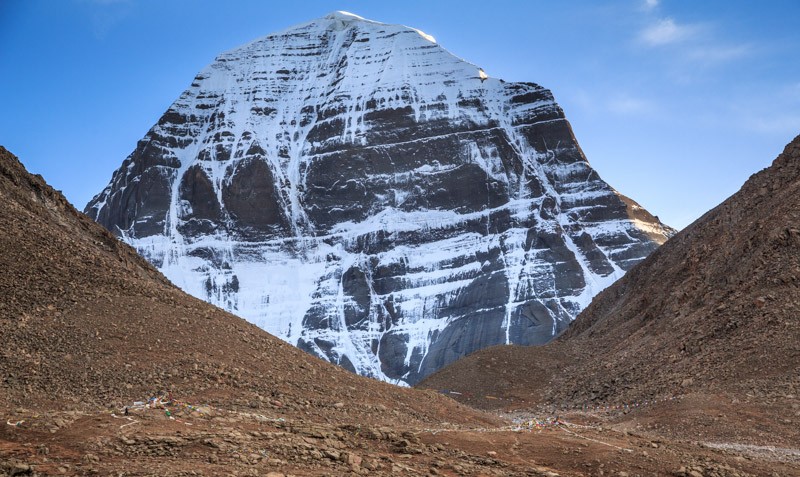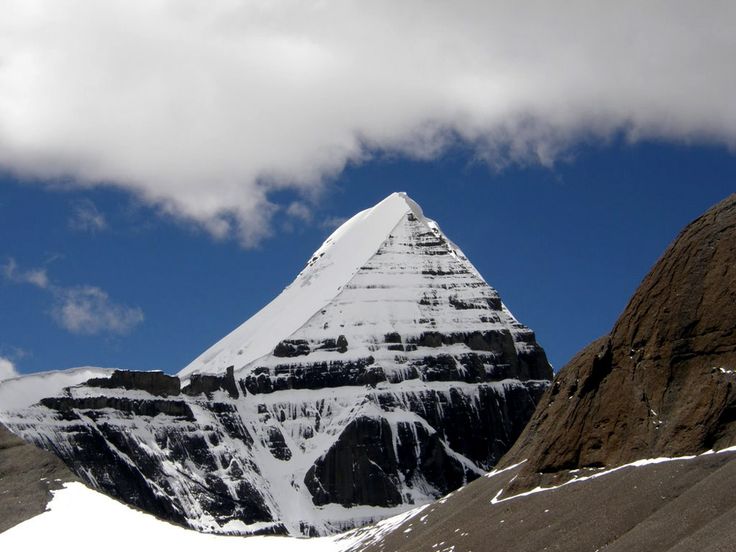Introduction: Why the Four Faces of Mount Kailash Matter
Mount Kailash, towering at 6,638 meters in the remote ranges of Tibet, isn't just a mountain—it is a cosmic axis, a sacred symbol revered by four major religions: Hinduism, Buddhism, Jainism, and Bon. But what truly deepens the mountain's spiritual and mystical allure are the Four Faces of Mount Kailash, each representing a different divine attribute and direction.
In this guide, we take a profound journey into the symbolism, mythology, geography, and spiritual interpretations of the four faces of Mount Kailash. Whether you're planning the Kailash Mansarovar Yatra or are a seeker of sacred knowledge, this blog offers insights that connect the physical and the metaphysical.
Table of Contents
-
The Geography of Mount Kailash
-
Overview of the Four Faces of Mount Kailash
-
The Southern Face: The Door to Liberation
-
The Northern Face: The Face of Purity
-
The Western Face: The Face of Vision
-
The Eastern Face: The Face of Compassion
-
Spiritual Interpretations in Hinduism, Buddhism, and Jainism
-
Mount Kailash and the Sacred Kailash Yatra
-
Mysteries and Legends Around the Four Faces
-
Conclusion: A Journey Inward
The Geography of Mount Kailash
Located in the Ngari Prefecture of Tibet, near Lake Mansarovar and Lake Rakshastal, Mount Kailash is unique in that no human has ever climbed its peak, as it is considered too sacred. What fascinates geologists and pilgrims alike is that the mountain has four symmetrical faces, aligned almost perfectly with the four cardinal directions—North, South, East, and West.
This alignment isn't just geographic—it’s spiritual.
Overview of the Four Faces of Mount Kailash
Each face of Mount Kailash holds a distinct meaning and appearance, often linked to spiritual enlightenment, cosmic consciousness, and the four elements of life:
| Face | Direction | Element | Symbolism |
|---|---|---|---|
| Southern | South | Fire | Liberation & Transformation |
| Northern | North | Air | Purity & Enlightenment |
| Western | West | Water | Vision & Insight |
| Eastern | East | Earth | Compassion & Life Energy |
Let’s explore each face in detail.
The Southern Face: The Door to Liberation

Facing the Lake Rakshastal, the Southern Face of Mount Kailash is the most visible and photographed. It is steep and vertical, often compared to a diamond or pyramid.
Symbolism:
-
Represents liberation from the cycle of birth and death (Moksha).
-
In Hinduism, this face is associated with Yama, the god of death and transformation.
-
Believed to open the door to higher consciousness for those who meditate upon it.
Visual Traits:
-
Straight, razor-sharp ridges
-
Black granite appearing like a trident (trishul)
The Northern Face: The Face of Purity

Overlooking the pristine Lake Mansarovar, the Northern Face is said to radiate a divine white light, often seen covered in snow and ice.
Symbolism:
-
Represents purity, peace, and detachment.
-
Connected to Shiva’s meditative form, signifying stillness and inner awakening.
-
In Tibetan Buddhism, it is linked to Demchog (Chakrasamvara)—the deity of bliss and transformation.
Spiritual Significance:
-
Many Buddhist pilgrims circumambulate the mountain clockwise from this face.
-
Considered the most serene and spiritually resonant of the four.
The Western Face: The Face of Vision

The Western Face is the most difficult to see and access, often hidden by glaciers or weather conditions.
Symbolism:
-
Associated with insight, wisdom, and divine vision.
-
In Jainism, it represents Rishabhdev, the first Tirthankara who attained Nirvana here.
-
Seen as the “Eye of Kailash,” granting those who perceive it an inner revelation.
The Eastern Face: The Face of Compassion

Facing the rising sun, the Eastern Face is bathed in golden light during dawn, symbolizing rebirth and compassion.
Symbolism:
-
Aligned with Avalokiteshvara (Chenrezig) in Buddhism, the Bodhisattva of Compassion.
-
Represents the origin of life, energy, and nurturing.
Why It’s Important:
-
In Bon religion, it’s linked to spiritual creation and the cyclical nature of life.
Spiritual Interpretations in Hinduism, Buddhism, and Jainism
Hinduism:
-
Believed to be the abode of Lord Shiva, with each face representing a divine aspect of his personality.
Buddhism:
-
Known as Kang Rinpoche (Precious Jewel of Snow), each face aligns with a different Buddha or Bodhisattva.
Jainism:
-
Rishabhdev achieved Kevala Jnana (perfect knowledge) here.
Bon Religion:
-
The mountain is a Nine-Story Swastika Mountain, home to the sky gods.
Mount Kailash and the Sacred Kailash Yatra
Thousands of pilgrims undertake the Kailash Mansarovar Yatra every year, walking the 52 km kora (circumambulation) around Mount Kailash to gain merit and cleanse karma.
Highlights:
-
Passing each face offers different spiritual lessons.
-
The Dirapuk and Zuthulpuk monasteries lie along the path.
-
The Dolma La Pass at 5,630m is the highest point, representing spiritual rebirth.
Tip: Complete the kora circuit in a clockwise direction for Hindus and Buddhists, and counter-clockwise for Bon followers.
Mysteries and Legends Around the Four Faces
Mount Kailash is surrounded by many unsolved mysteries:
-
No one has climbed it, and those who tried reportedly turned back due to strange circumstances.
-
Some say the faces align with the pyramids of Giza, suggesting an ancient energy grid.
-
Others believe the four faces represent the four Vedas or four arms of Vishnu.
Read this : Mysteries about Kailash Parvat
Conclusion: A Journey Inward
Understanding the Four Faces of Mount Kailash isn’t just about geography or religion—it’s a journey into the self. Each face reflects aspects of our inner world: clarity, compassion, transformation, and wisdom. Whether you physically walk the kora or explore it spiritually, the mountain’s silent presence is enough to awaken something deep within.
The more you learn about Mount Kailash, the more you understand why it is the center of the universe in so many belief systems.




